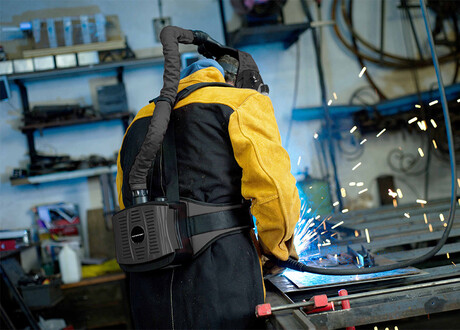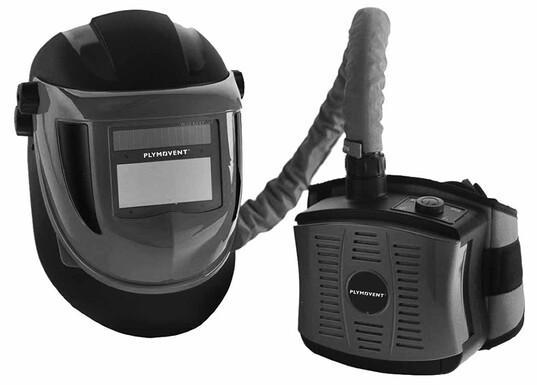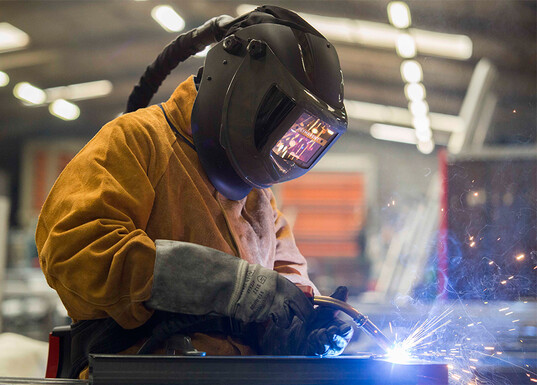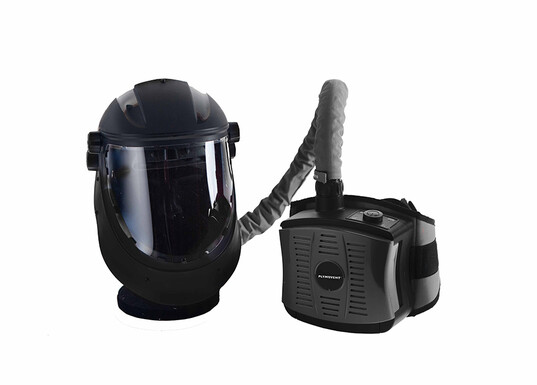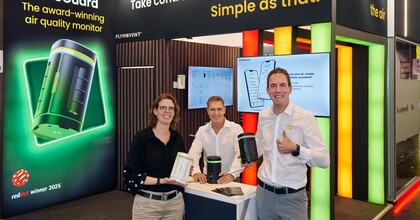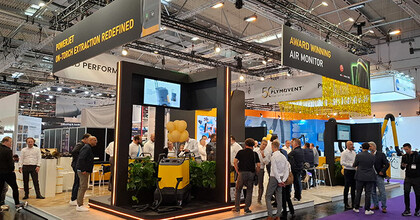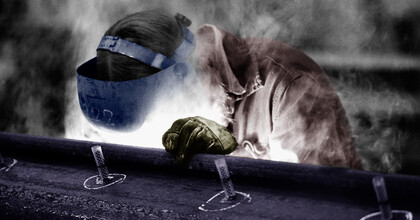Welders must be protected against hazardous welding fumes. Depending on the welding environment or how and what is welded, welders can be protected by systems for source extraction and general filtration and ventilation. Also, they can be protected by respiratory protective equipment (RPE), such as welding helmets with fresh air supply. Supplied air respirators are known to provide the best all-around protection for the welders themselves.
But what should you pay attention to when you have to select the most appropriate type of respirator for your circumstances? In this blog we look at a number of important aspects that need to be considered.
Officially approved
Above all always make sure that respirators have been officially approved by relevant authorities and that they meet specific standards. All respirators are uncomfortable to a certain degree, especially for the first-time user. Selecting the right type goes a long way toward making wearing it more comfortable. You may want to consult a supplier before making your final selection.
Most serious problem
Determine which gases and fumes represent the most serious problem for the job you are about to do. With protective equipment consult manufacturers or suppliers for advice on the most suitable type(s) of respirator.
Medical conditions
Take into consideration any prior medical conditions that may get worse if you use a respirator. Workers who use respiratory protective equipment should have a medical assessment to ensure they are medically fit to use it.
Correct filtration
The respirator you select must protect you from the respiratory hazard. Air-purifying masks will protect you from low levels of metal fumes, welding gases and organic vapours, but only if the correct filtration cartridge is selected. Contact the respirator supplier for assistance in selecting an appropriate cartridge.
Change cartridges
If you use an air-purifying mask to protect yourself from fumes containing metals such as chromium and cadmium, the cartridges with disposable filters may need to be changed frequently. The mask supplier can provide you with information about how often cartridges need to be changed.
Make it fit
Once you have selected the type of respirator that will properly protect you from the respiratory hazard, select the specific model to meet other needs. Fit, for example, is extremely important. A respirator that fits poorly allows hazardous materials to leak into the air you are breathing. Check that the respirator has a good seal. Is the respirator easy to adjust? Does it come in several sizes? Will it fit different-shaped faces? Always take into account facial hair and especially beards.
Clear and unrestricted views
Check that the respirator provides clear and unrestricted views up, down and sideways. Will glasses or goggles fit when the respirator is worn? Does the face shield fog up? Will the respirator fit under a hard hat if necessary? Will it fit under the welding helmet? Some welding helmets are equipped with built-in respiratory equipment.
Freedom of movement and speech
Does the respirator provide enough freedom of movement and allow for verbal communication when these are necessary? Is the respirator noisy, as are some supplied air respirators? Does it interfere with hearing?
Does the respirator provide a speaking diaphragm or a way to communicate electronically? Can others make out what you are saying when you communicate through these devices? How far away can you be heard? The answers to these questions may be important in situations where you are working in a confined space and away from others.
What about the workplace?
RPE only protects the welder. Take into account other people in the workplace. Are you protecting them, or might it be better to look at effective at source welding fume capture or general air cleaning.

